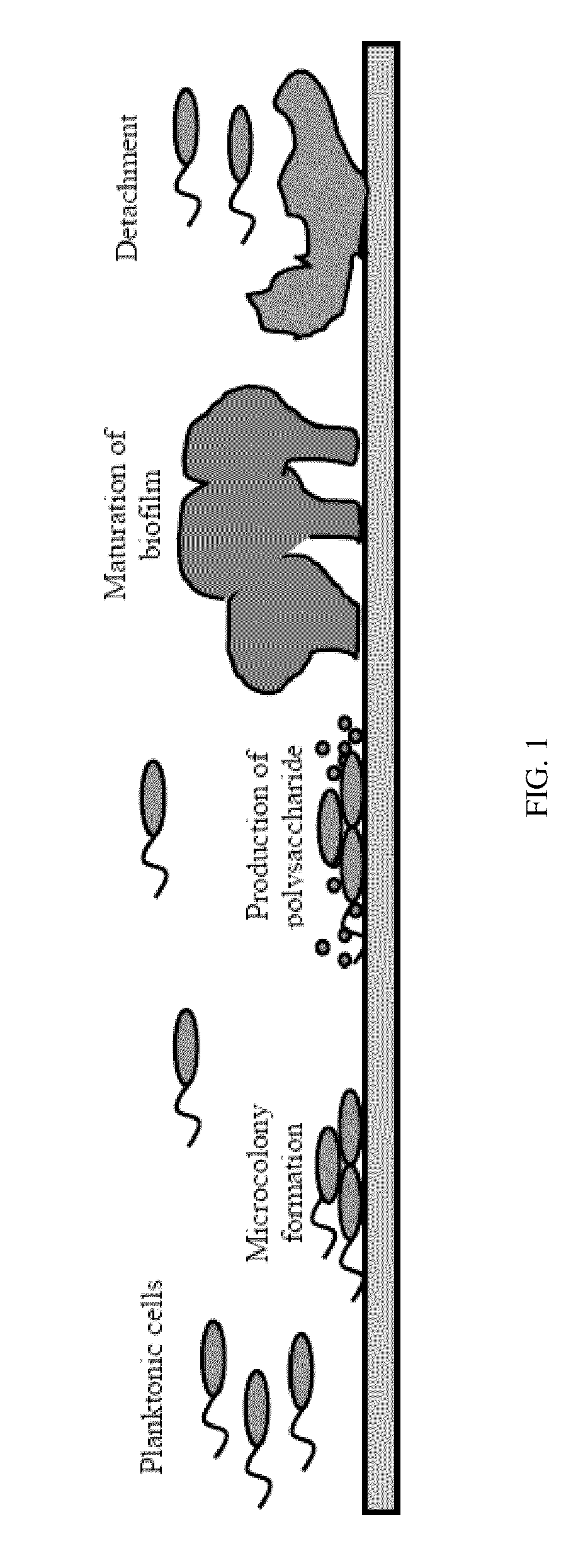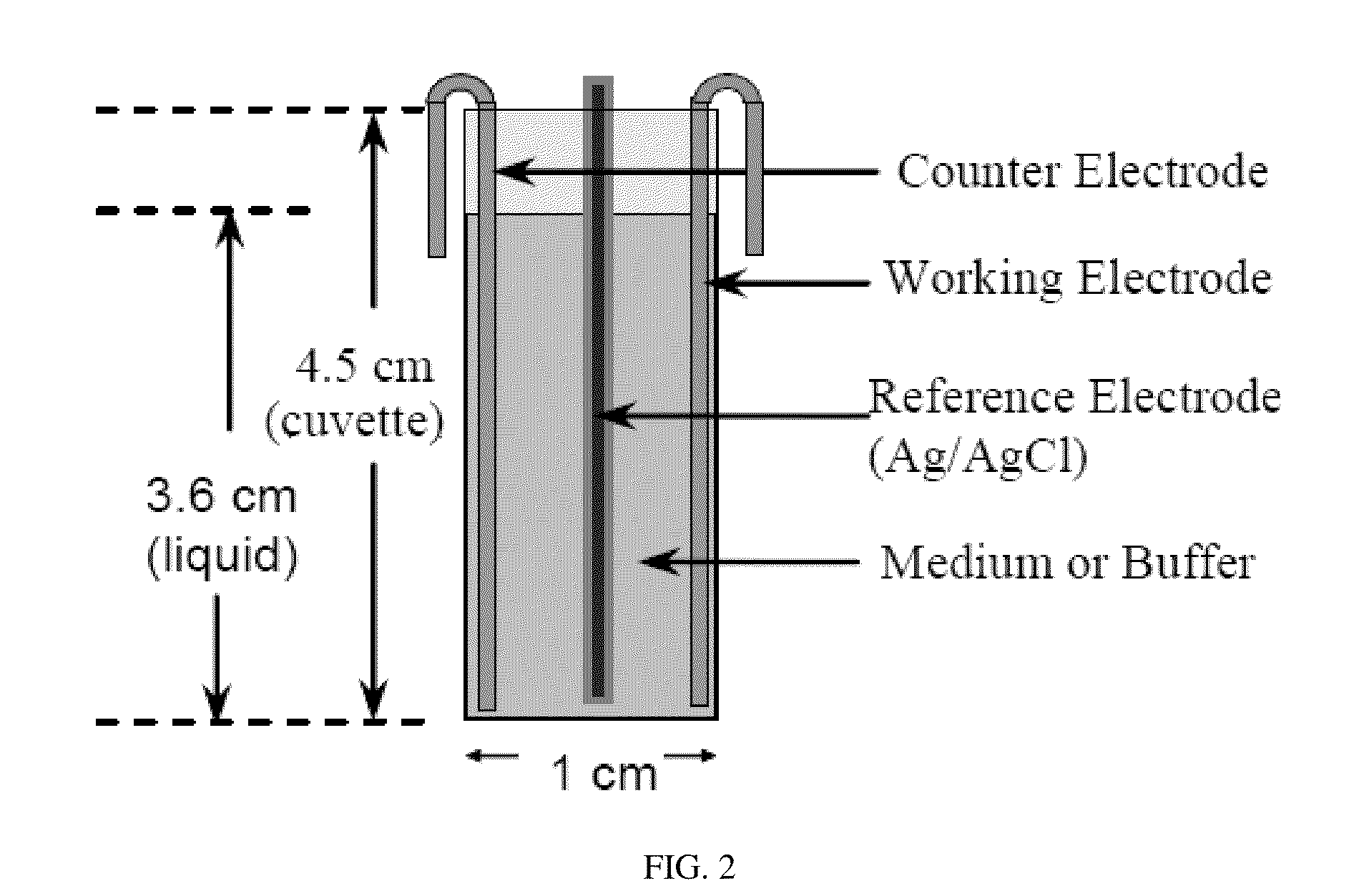System And Method For Controlling Bacterial Cells With Weak Electric Currents
- Summary
- Abstract
- Description
- Claims
- Application Information
AI Technical Summary
Benefits of technology
Problems solved by technology
Method used
Image
Examples
example i
[0048]The present invention was tested using an electrochemical cell seen in FIG. 2 and with the use of E. coli HM22 constructed by the pioneer work of Moyed and Bertrand because it produces 1000 times more persister cells in exponential-phase cultures than the wild-type E. coli strains and has been used in most studies of persister cells. To evaluate the effects of electric currents, the persister cells were first isolated as described previously. Briefly, the exponential culture of HM22 at optical density at 600 nm (OD600) of 0.3 in LB medium was treated with 100 μg / mL ampicillin for 3 h to kill and lyse the normal cells. The persister cells were then collected by centrifugation at 8000 rpm at 4° C. for 10 min and resuspended in 0.85% NaCl buffer. The persister cells were then treated in a customized electrochemical cell, shown in FIG. 2. Electrodes with a dimension of 1 cm×5.6 cm were cut from a flat 304L stainless steel sheet (MSC; Melville, N.Y.) or graphite sheet (McMaster—CAR...
example 2
[0080]Bacterial strains and growth media. B. subtilis 168 (trpC2) was used for planktonic studies. B. subtilis BE1500 (trpC2, metB10, lys-3, ΔaprE66, Δnpr-82, ΔsacB::ermC} was obtained from EI du Pont de Nemours Inc (Wilmington, Del.) and used for the biofilm studies. Overnight cultures were grown at 37° C. with aeration via shaking on an orbital shaker (Fisher Scientific; Hampton, N.H.) at 200 rpm. Biofilms were developed on stainless steel coupons (5.6 cm by 1.0 cm) in batch culture at 37° C. in 100 mm petri dishes (Fisher Scientific; Hampton, N.H.) for 48 hours. Luria-Bertani (LB) medium consisting of 10 g / L NaCl, 10 g / L tryptone, and 5 g / L yeast extract (all from Fisher Scientific; Hampton, N.H.) was used for both planktonic and biofilm cultures. LB agar plates were prepared by adding 15 g / L Bacto agar (Fisher Scientific) to LB medium prior to autoclaving and pouring into 100 mm petri dishes (Fisher Scientific).
[0081]Poly-γ-glutamic acid (PGA) is a viscous protein produced predo...
PUM
 Login to View More
Login to View More Abstract
Description
Claims
Application Information
 Login to View More
Login to View More - R&D
- Intellectual Property
- Life Sciences
- Materials
- Tech Scout
- Unparalleled Data Quality
- Higher Quality Content
- 60% Fewer Hallucinations
Browse by: Latest US Patents, China's latest patents, Technical Efficacy Thesaurus, Application Domain, Technology Topic, Popular Technical Reports.
© 2025 PatSnap. All rights reserved.Legal|Privacy policy|Modern Slavery Act Transparency Statement|Sitemap|About US| Contact US: help@patsnap.com



